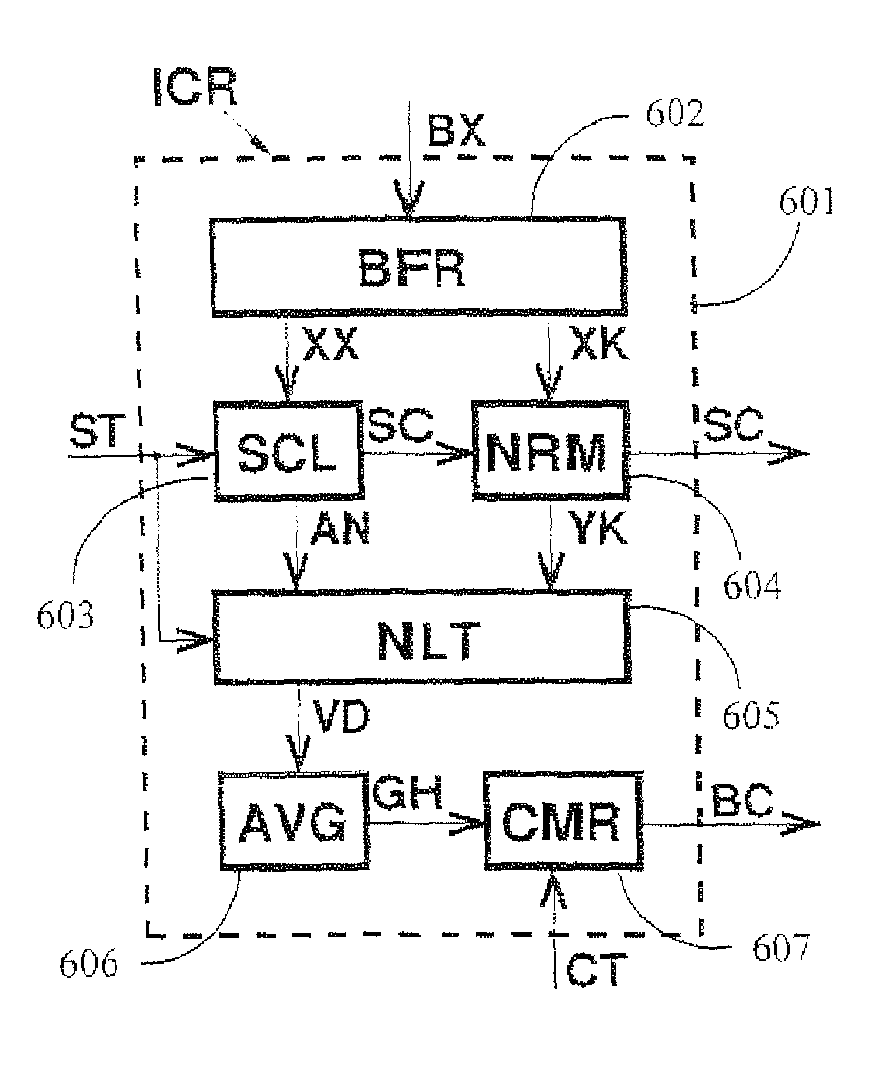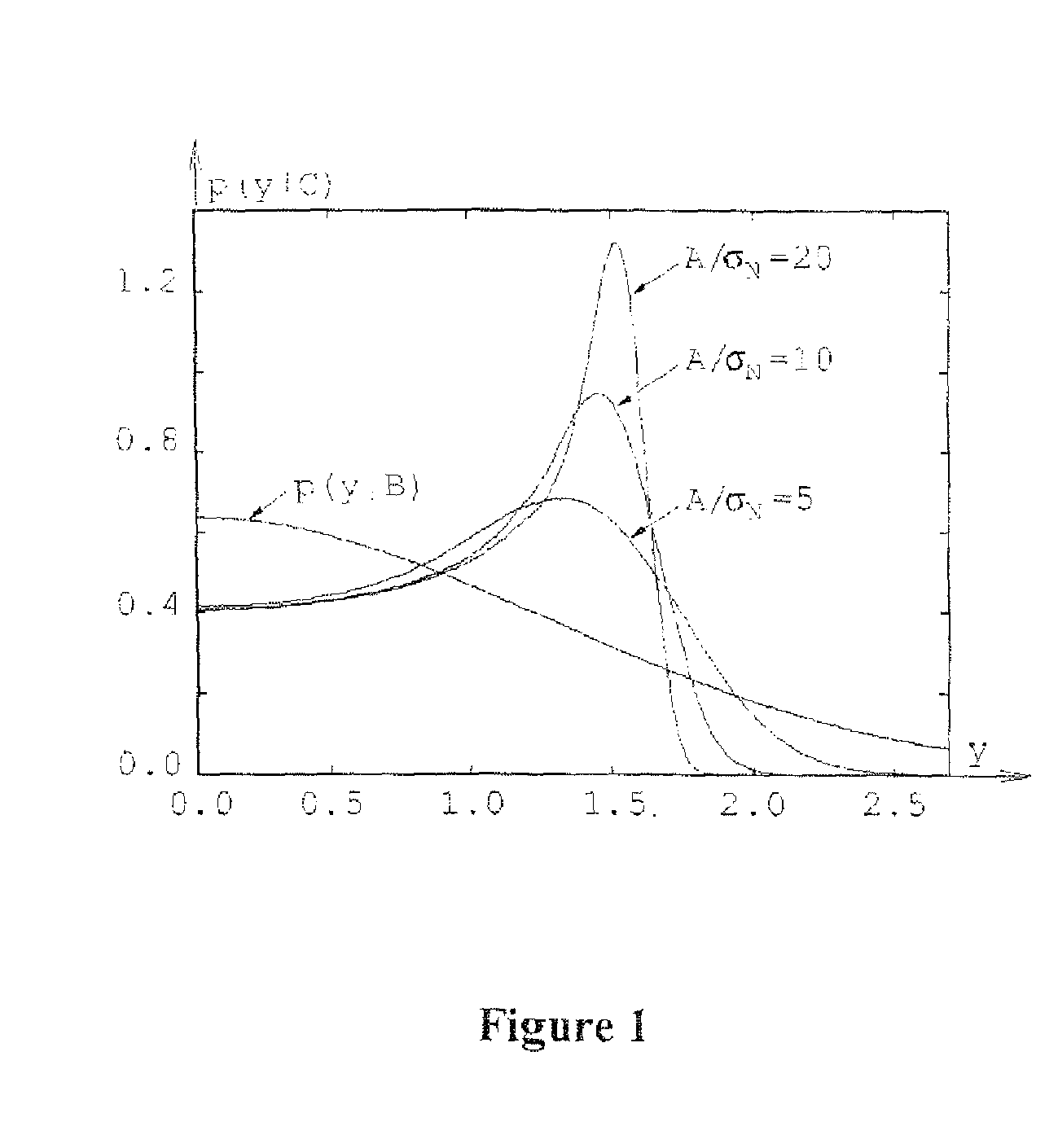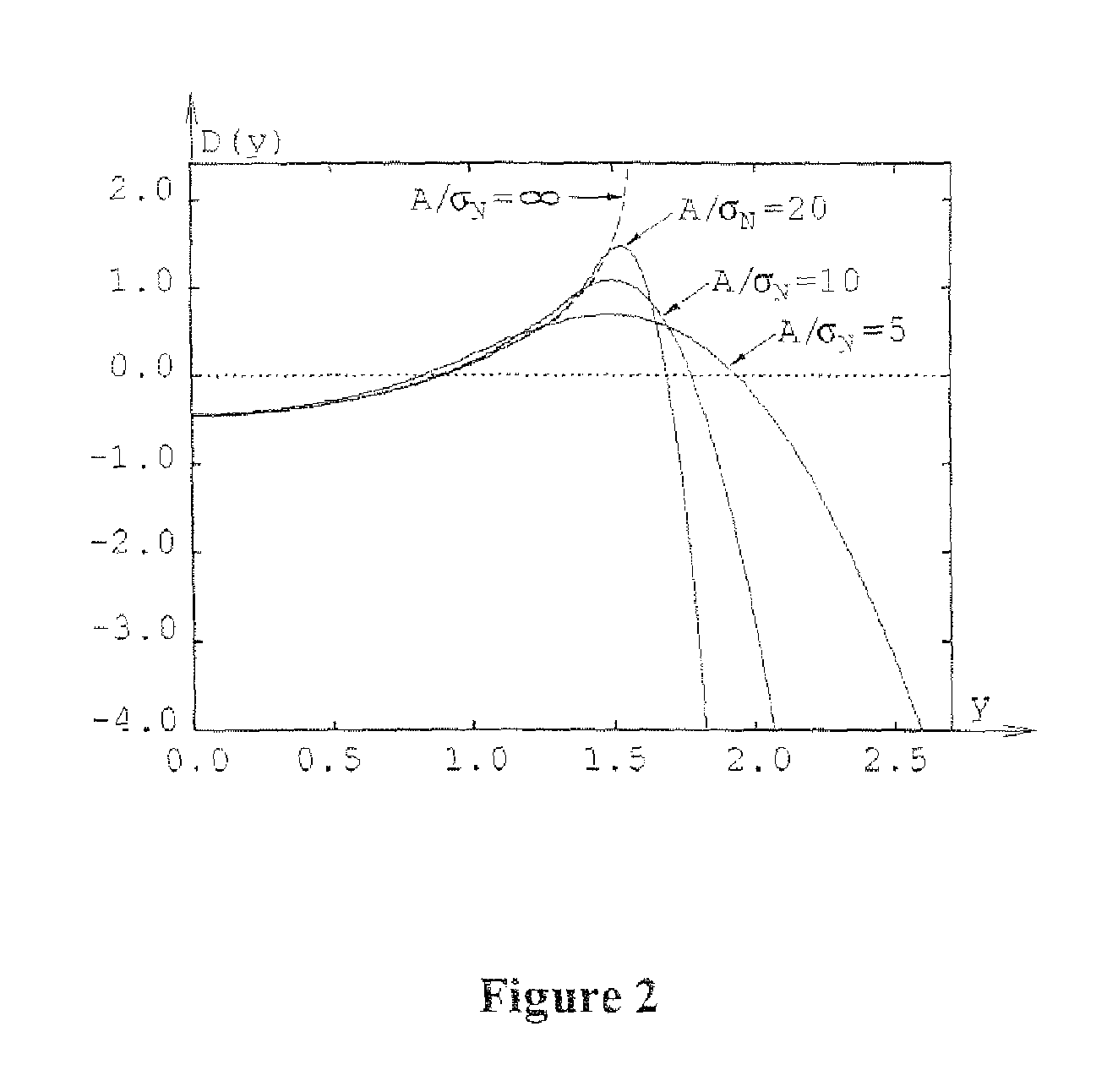Classification of interference
a technology of interference and classification, applied in the field of classification of interference, can solve the problems affecting transmission performance, and affecting the reliability of passive systems, and achieve the effects of reducing interference effects, reliable detection, and improving automotive radar
- Summary
- Abstract
- Description
- Claims
- Application Information
AI Technical Summary
Benefits of technology
Problems solved by technology
Method used
Image
Examples
Embodiment Construction
[0052]Before describing some practical embodiments of the present invention, the underlying theory behind the embodiments is provided.
[0053]Consider a received signal that comprises standard background noise (e.g. thermal noise) and pulse-like high-level interference (i.e. transient interference). Such transient interference may have originated either from a short burst of wideband noise or from a pulse with frequency-modulated carrier (a chirp).
[0054]In systems employing discrete-time signal processing, a noise burst will produce a sequence of samples having a Gaussian distribution, whereas a frequency chirp will generate samples with the same characteristics as those obtained by random sampling of a constant-amplitude sinusoidal wave. This observation can be exploited in many different ways to develop a statistical procedure for discriminating between noise bursts and chirps. However, neither duration nor the power of observed transient interference can provide any useful informat...
PUM
 Login to View More
Login to View More Abstract
Description
Claims
Application Information
 Login to View More
Login to View More - R&D
- Intellectual Property
- Life Sciences
- Materials
- Tech Scout
- Unparalleled Data Quality
- Higher Quality Content
- 60% Fewer Hallucinations
Browse by: Latest US Patents, China's latest patents, Technical Efficacy Thesaurus, Application Domain, Technology Topic, Popular Technical Reports.
© 2025 PatSnap. All rights reserved.Legal|Privacy policy|Modern Slavery Act Transparency Statement|Sitemap|About US| Contact US: help@patsnap.com



